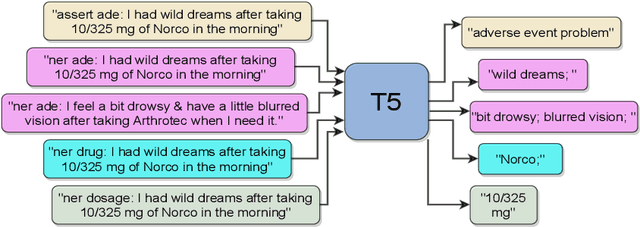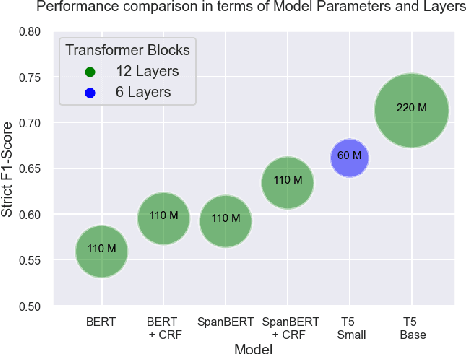Mohammad Ghassemi
Foundation Model-Aided Deep Reinforcement Learning for RIS-Assisted Wireless Communication
Jun 11, 2025Abstract:Reconfigurable intelligent surfaces (RIS) have emerged as a promising technology for enhancing wireless communication by dynamically controlling signal propagation in the environment. However, their efficient deployment relies on accurate channel state information (CSI), which leads to high channel estimation overhead due to their passive nature and the large number of reflective elements. In this work, we solve this challenge by proposing a novel framework that leverages a pre-trained open-source foundation model (FM) named large wireless model (LWM) to process wireless channels and generate versatile and contextualized channel embeddings. These embeddings are then used for the joint optimization of the BS beamforming and RIS configurations. To be more specific, for joint optimization, we design a deep reinforcement learning (DRL) model to automatically select the BS beamforming vector and RIS phase-shift matrix, aiming to maximize the spectral efficiency (SE). This work shows that a pre-trained FM for radio signal understanding can be fine-tuned and integrated with DRL for effective decision-making in wireless networks. It highlights the potential of modality-specific FMs in real-world network optimization. According to the simulation results, the proposed method outperforms the DRL-based approach and beam sweeping-based approach, achieving 9.89% and 43.66% higher SE, respectively.
Generative AI-enabled Blockage Prediction for Robust Dual-Band mmWave Communication
Jan 20, 2025Abstract:In mmWave wireless networks, signal blockages present a significant challenge due to the susceptibility to environmental moving obstructions. Recently, the availability of visual data has been leveraged to enhance blockage prediction accuracy in mmWave networks. In this work, we propose a Vision Transformer (ViT)-based approach for visual-aided blockage prediction that intelligently switches between mmWave and Sub-6 GHz frequencies to maximize network throughput and maintain reliable connectivity. Given the computational demands of processing visual data, we implement our solution within a hierarchical fog-cloud computing architecture, where fog nodes collaborate with cloud servers to efficiently manage computational tasks. This structure incorporates a generative AI-based compression technique that significantly reduces the volume of visual data transmitted between fog nodes and cloud centers. Our proposed method is tested with the real-world DeepSense 6G dataset, and according to the simulation results, it achieves a blockage prediction accuracy of 92.78% while reducing bandwidth usage by 70.31%.
Bridging the Gap: Enhancing LLM Performance for Low-Resource African Languages with New Benchmarks, Fine-Tuning, and Cultural Adjustments
Dec 16, 2024Abstract:Large Language Models (LLMs) have shown remarkable performance across various tasks, yet significant disparities remain for non-English languages, and especially native African languages. This paper addresses these disparities by creating approximately 1 million human-translated words of new benchmark data in 8 low-resource African languages, covering a population of over 160 million speakers of: Amharic, Bambara, Igbo, Sepedi (Northern Sotho), Shona, Sesotho (Southern Sotho), Setswana, and Tsonga. Our benchmarks are translations of Winogrande and three sections of MMLU: college medicine, clinical knowledge, and virology. Using the translated benchmarks, we report previously unknown performance gaps between state-of-the-art (SOTA) LLMs in English and African languages. Finally, using results from over 400 fine-tuned models, we explore several methods to reduce the LLM performance gap, including high-quality dataset fine-tuning (using an LLM-as-an-Annotator), cross-lingual transfer, and cultural appropriateness adjustments. Key findings include average mono-lingual improvements of 5.6% with fine-tuning (with 5.4% average mono-lingual improvements when using high-quality data over low-quality data), 2.9% average gains from cross-lingual transfer, and a 3.0% out-of-the-box performance boost on culturally appropriate questions. The publicly available benchmarks, translations, and code from this study support further research and development aimed at creating more inclusive and effective language technologies.
Multi-Modal Transformer and Reinforcement Learning-based Beam Management
Oct 22, 2024Abstract:Beam management is an important technique to improve signal strength and reduce interference in wireless communication systems. Recently, there has been increasing interest in using diverse sensing modalities for beam management. However, it remains a big challenge to process multi-modal data efficiently and extract useful information. On the other hand, the recently emerging multi-modal transformer (MMT) is a promising technique that can process multi-modal data by capturing long-range dependencies. While MMT is highly effective in handling multi-modal data and providing robust beam management, integrating reinforcement learning (RL) further enhances their adaptability in dynamic environments. In this work, we propose a two-step beam management method by combining MMT with RL for dynamic beam index prediction. In the first step, we divide available beam indices into several groups and leverage MMT to process diverse data modalities to predict the optimal beam group. In the second step, we employ RL for fast beam decision-making within each group, which in return maximizes throughput. Our proposed framework is tested on a 6G dataset. In this testing scenario, it achieves higher beam prediction accuracy and system throughput compared to both the MMT-only based method and the RL-only based method.
Temporal Link Prediction Using Graph Embedding Dynamics
Jan 15, 2024



Abstract:Graphs are a powerful representation tool in machine learning applications, with link prediction being a key task in graph learning. Temporal link prediction in dynamic networks is of particular interest due to its potential for solving complex scientific and real-world problems. Traditional approaches to temporal link prediction have focused on finding the aggregation of dynamics of the network as a unified output. In this study, we propose a novel perspective on temporal link prediction by defining nodes as Newtonian objects and incorporating the concept of velocity to predict network dynamics. By computing more specific dynamics of each node, rather than overall dynamics, we improve both accuracy and explainability in predicting future connections. We demonstrate the effectiveness of our approach using two datasets, including 17 years of co-authorship data from PubMed. Experimental results show that our temporal graph embedding dynamics approach improves downstream classification models' ability to predict future collaboration efficacy in co-authorship networks by 17.34% (AUROC improvement relative to the baseline model). Furthermore, our approach offers an interpretable layer over traditional approaches to address the temporal link prediction problem.
Nightly Automobile Claims Prediction from Telematics-Derived Features: A Multilevel Approach
May 10, 2022



Abstract:In recent years it has become possible to collect GPS data from drivers and to incorporate this data into automobile insurance pricing for the driver. This data is continuously collected and processed nightly into metadata consisting of mileage and time summaries of each discrete trip taken, and a set of behavioral scores describing attributes of the trip (e.g, driver fatigue or driver distraction) so we examine whether it can be used to identify periods of increased risk by successfully classifying trips that occur immediately before a trip in which there was an incident leading to a claim for that driver. Identification of periods of increased risk for a driver is valuable because it creates an opportunity for intervention and, potentially, avoidance of a claim. We examine metadata for each trip a driver takes and train a classifier to predict whether \textit{the following trip} is one in which a claim occurs for that driver. By achieving a area under the receiver-operator characteristic above 0.6, we show that it is possible to predict claims in advance. Additionally, we compare the predictive power, as measured by the area under the receiver-operator characteristic of XGBoost classifiers trained to predict whether a driver will have a claim using exposure features such as driven miles, and those trained using behavioral features such as a computed speed score.
SupCL-Seq: Supervised Contrastive Learning for Downstream Optimized Sequence Representations
Sep 15, 2021



Abstract:While contrastive learning is proven to be an effective training strategy in computer vision, Natural Language Processing (NLP) is only recently adopting it as a self-supervised alternative to Masked Language Modeling (MLM) for improving sequence representations. This paper introduces SupCL-Seq, which extends the supervised contrastive learning from computer vision to the optimization of sequence representations in NLP. By altering the dropout mask probability in standard Transformer architectures, for every representation (anchor), we generate augmented altered views. A supervised contrastive loss is then utilized to maximize the system's capability of pulling together similar samples (e.g., anchors and their altered views) and pushing apart the samples belonging to the other classes. Despite its simplicity, SupCLSeq leads to large gains in many sequence classification tasks on the GLUE benchmark compared to a standard BERTbase, including 6% absolute improvement on CoLA, 5.4% on MRPC, 4.7% on RTE and 2.6% on STSB. We also show consistent gains over self supervised contrastively learned representations, especially in non-semantic tasks. Finally we show that these gains are not solely due to augmentation, but rather to a downstream optimized sequence representation. Code: https://github.com/hooman650/SupCL-Seq
Exploring a Unified Sequence-To-Sequence Transformer for Medical Product Safety Monitoring in Social Media
Sep 13, 2021



Abstract:Adverse Events (AE) are harmful events resulting from the use of medical products. Although social media may be crucial for early AE detection, the sheer scale of this data makes it logistically intractable to analyze using human agents, with NLP representing the only low-cost and scalable alternative. In this paper, we frame AE Detection and Extraction as a sequence-to-sequence problem using the T5 model architecture and achieve strong performance improvements over competitive baselines on several English benchmarks (F1 = 0.71, 12.7% relative improvement for AE Detection; Strict F1 = 0.713, 12.4% relative improvement for AE Extraction). Motivated by the strong commonalities between AE-related tasks, the class imbalance in AE benchmarks and the linguistic and structural variety typical of social media posts, we propose a new strategy for multi-task training that accounts, at the same time, for task and dataset characteristics. Our multi-task approach increases model robustness, leading to further performance gains. Finally, our framework shows some language transfer capabilities, obtaining higher performance than Multilingual BERT in zero-shot learning on French data.
 Add to Chrome
Add to Chrome Add to Firefox
Add to Firefox Add to Edge
Add to Edge